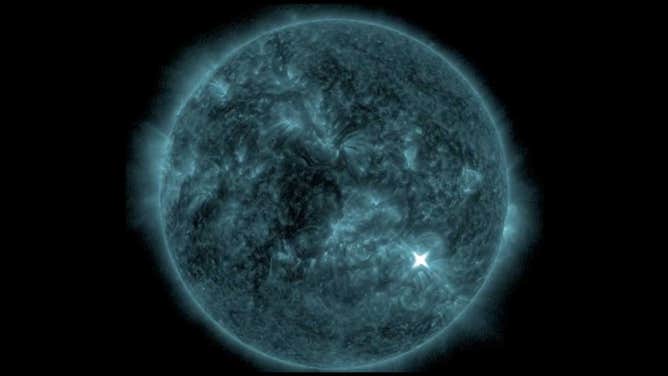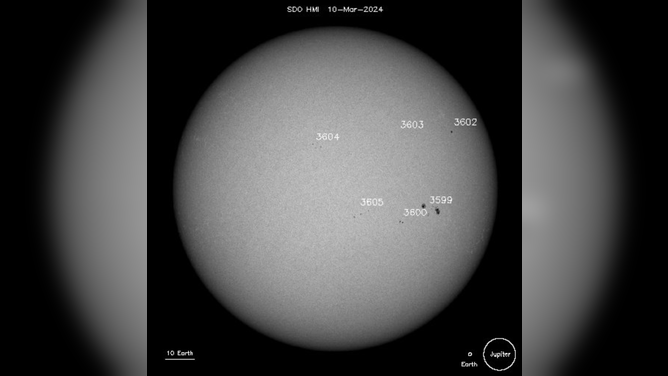The largest explosions in the solar system, a solar flare is an explosion of energy that occurs on the sun’s surface, often appearing as a localized burst of bright light.
The Sun started Sunday with a wild display, producing a strong M-Class flare and potentially causing radio blackouts.
NOAA's Space Weather Prediction (SWPC) office said an impulsive M7.4 X-ray flare peaked at 8:13 a.m. EDT on Sunday.
The flare was classified as an M7.4 flare. M is the second-most-intense type of flare, and the number reflects its strength. The Solar Ultraviolet Imager instrument on NOAA's GOES East satellite captured the solar flare in the animation below shared by NOAA's Cooperative Institute for Meteorological Satellite Studies at the University of Wisconsin-Madison.
Powerful solar flares can cause high-frequency radio blackouts and pose risks to space launches and spacecraft orbiting Earth. However, most people do not need to be concerned as these energetic particles do not reach low enough into Earth's atmosphere to affect the public.
WHAT YOU NEED TO KNOW ABOUT APRIL'S TOTAL SOLAR ECLIPSE
Due to the intensity of the flare, the SWPC is predicting moderate (level 2 out of 5) high-frequency radio blackouts. According to the SWPC Radio Communication Dashboard, parts of North and South America, including Brazil, Columbia and Venezuela, could have experienced degraded frequencies after the space weather event. These blackouts can last "tens of minutes," according to the SWPC.

A solar flare seen from the Sun's active region 3599 on Sunday, March 10 as seen by NOAA's GOES East satellite. (Image: UW-Madison CIMSS/NOAA)
(NOAA)
Solar flares typically take place in active regions of the Sun and are often associated with sunspot groups.
WHAT IS THE 11-YEAR SOLAR CYCLE?
The region where Sunday's solar flare originated is known as Active Region 3599. There is a cluster of sunspots in the same region of the Sun, which is visible on NASA's Solar and Heliophysics Observatory (SOHO) imagery.

Sunspots seen in the active region 3599 of the Sun in this NASA SOHO image taken on March 10, 2024. (Image: NASA)
(NASA)
NASA released the solar activity for the week on Sunday, as seen by its Solar Dynamics Observatory (SDO) spacecraft.
SDO didn't record any flares this past week before the solar flare on Sunday.
Article From & Read More ( Strong solar flare sent blasting from Sun causing limited radio blackouts - Fox Weather )https://ift.tt/Ufe6uyI
Science
No comments:
Post a Comment